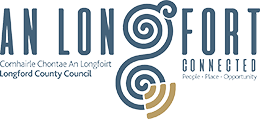Ardagh House
When you stand in the centre of Ardagh Village and look south, you get an impressive view of Ardagh House. The house and its grounds are private property and not accessible to the public.
History of Ardagh House
Ardagh House was built around 1730 by Thomas Fetherston. From the north of England, the Fetherstons arrived in Ardagh around 1700, having acquired a small amount of land. Aradagh House remained their family home until the early 1920s.
The house underwent alterations on a couple of occasions in the 1800s, expanding their estate. It was the Fetherston family who built Ardagh Village as it stands today.
Ardagh House was the scene of a famous episode in the youth of the writer Oliver Goldsmith. While travelling back to his home in Pallas from school in Edgeworthstown, he stopped in Ardagh to seek lodgings.
A local directed him to the ‘big house’, saying it was the local inn. The Fetherstons recognised him and played along with his misunderstanding to the extent that a daughter of the squire waited on him. The next morning, Goldsmith was told the truth, and he later wrote the play She Stoops To Conquer (or The Mistakes Of A Night), based on the episode.
The last landlord, Rev Sir George Fetherston, was an Anglican clergyman who lived mainly in England. He died in 1923. By then, the estate had been broken up, with most tenants buying their farms under the Land Acts.
In 1922, the IRA had attempted unsuccessfully to burn the house.
In 1927, the Sisters of Mercy arrived, and the building became a convent. They soon established a training centre for domestic science. The course underwent modernisation, and St Brigid’s Training Centre remained open until 2008. In 1949, a serious fire resulted in renovations that included the removal of the top storey. Beside the house, there is a spacious coach yard which was restored by the Sisters of Mercy in the early 1990s.



